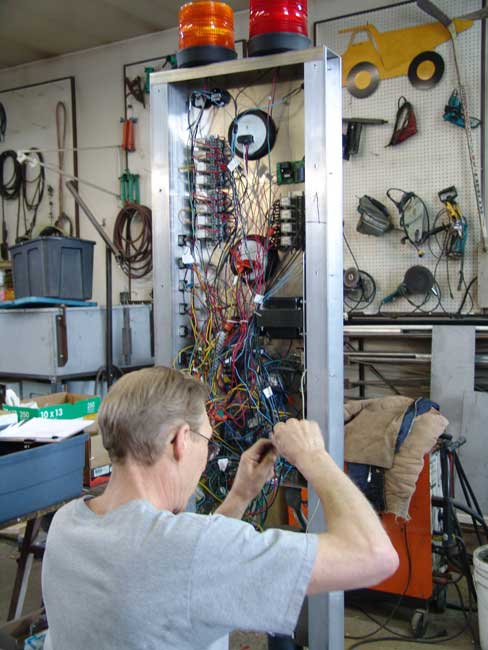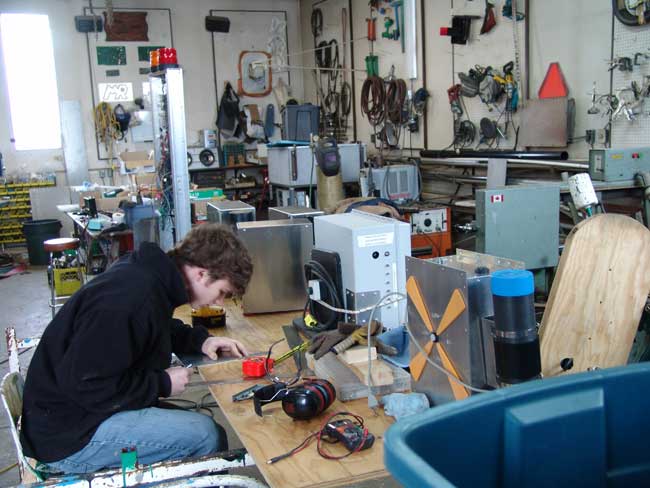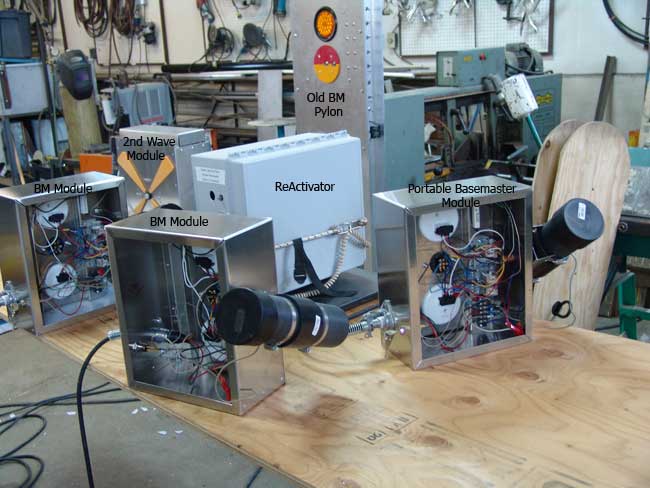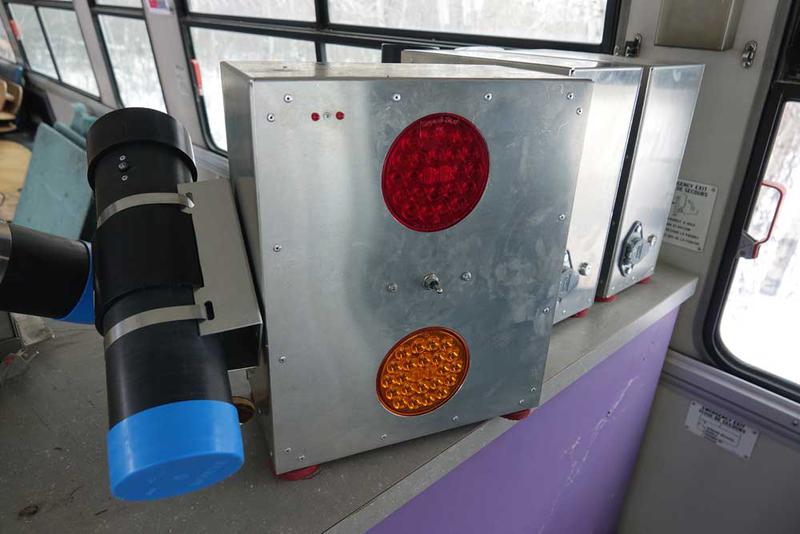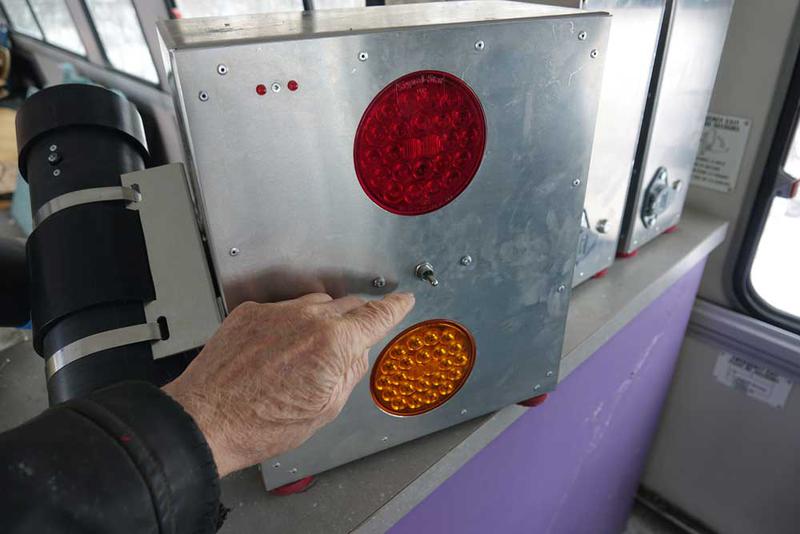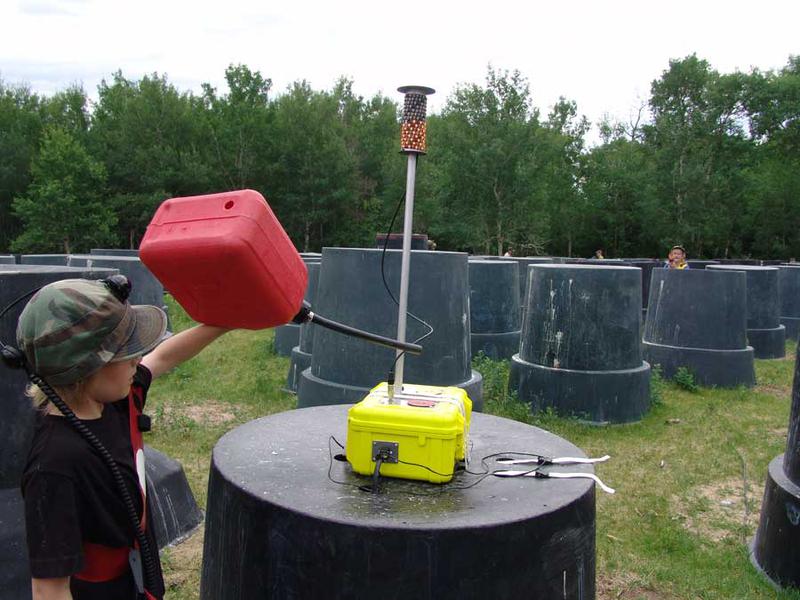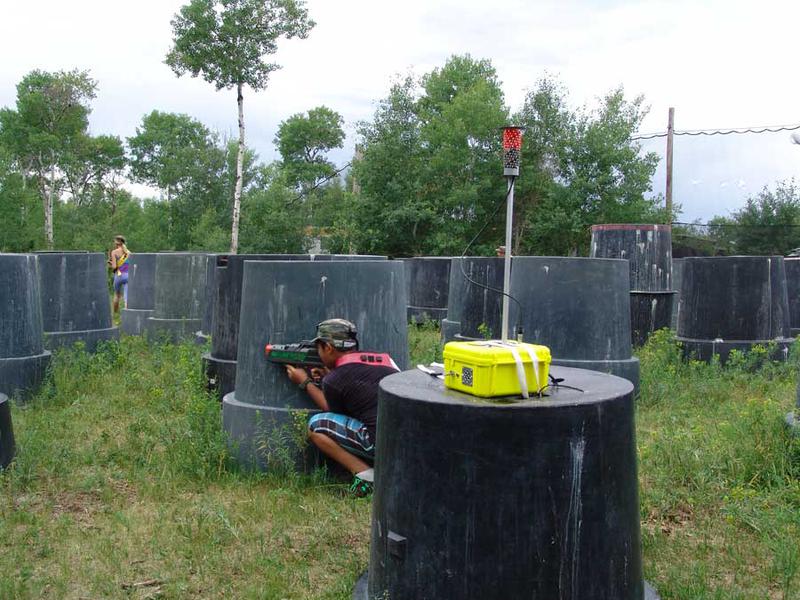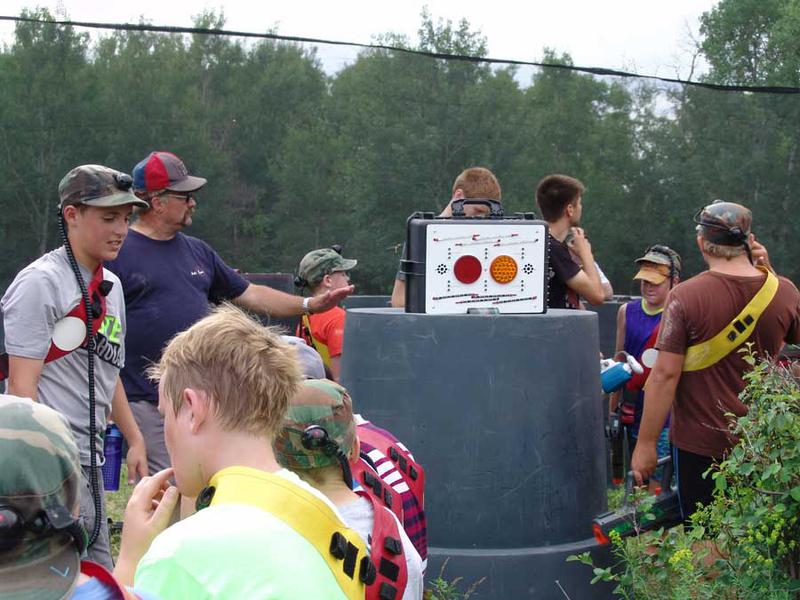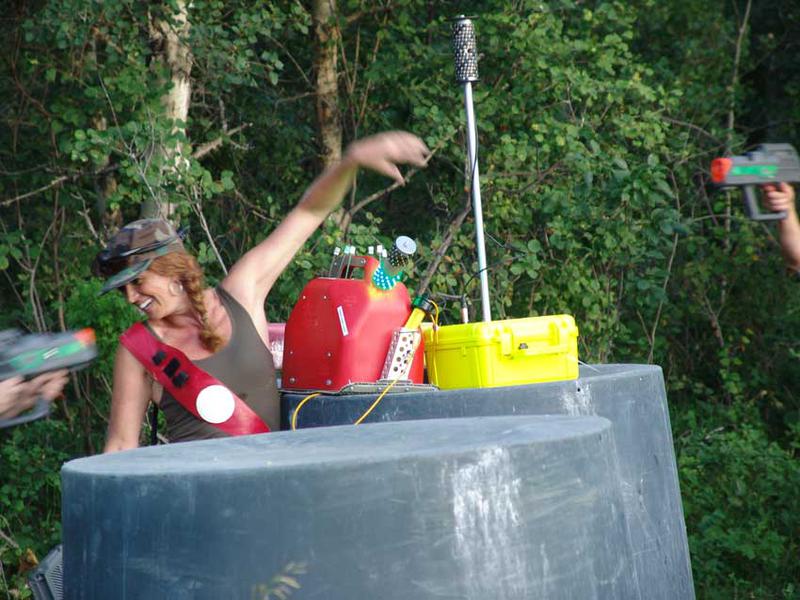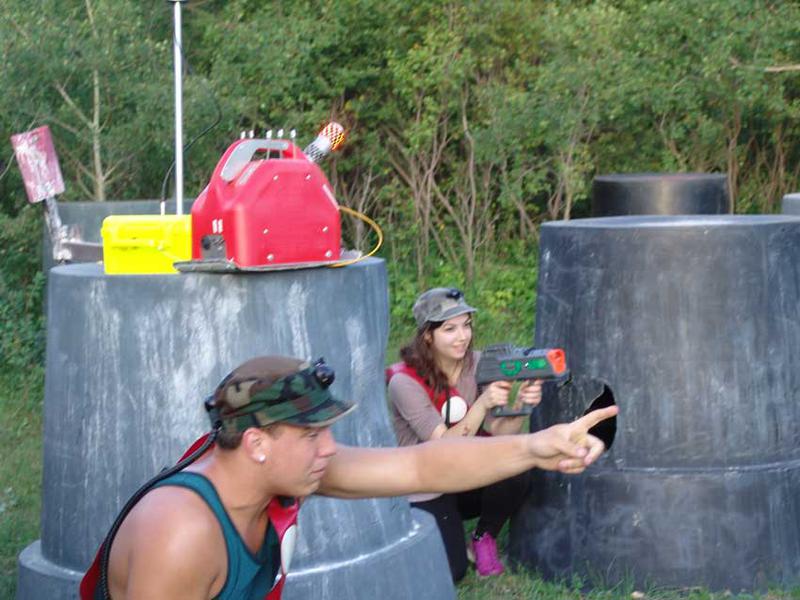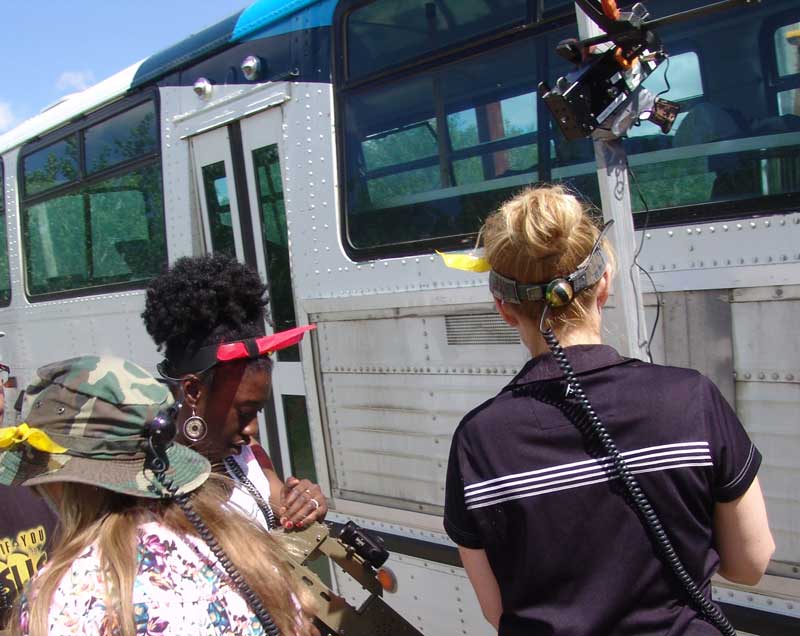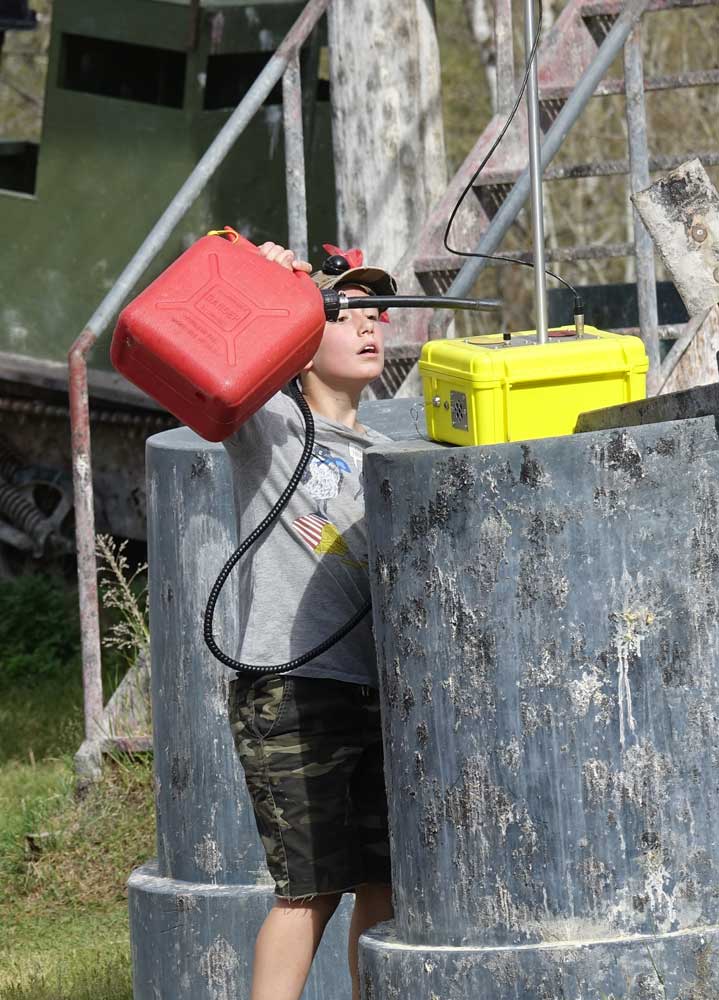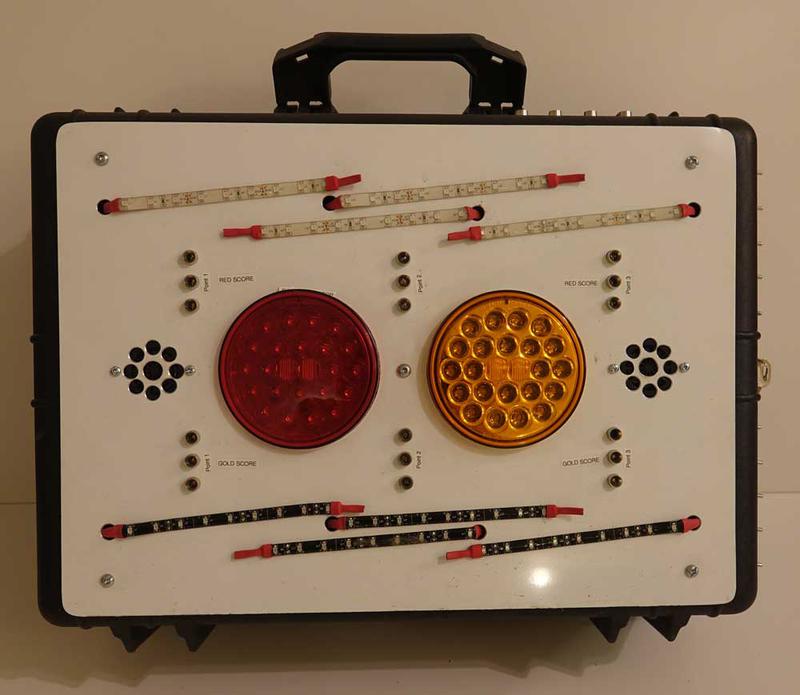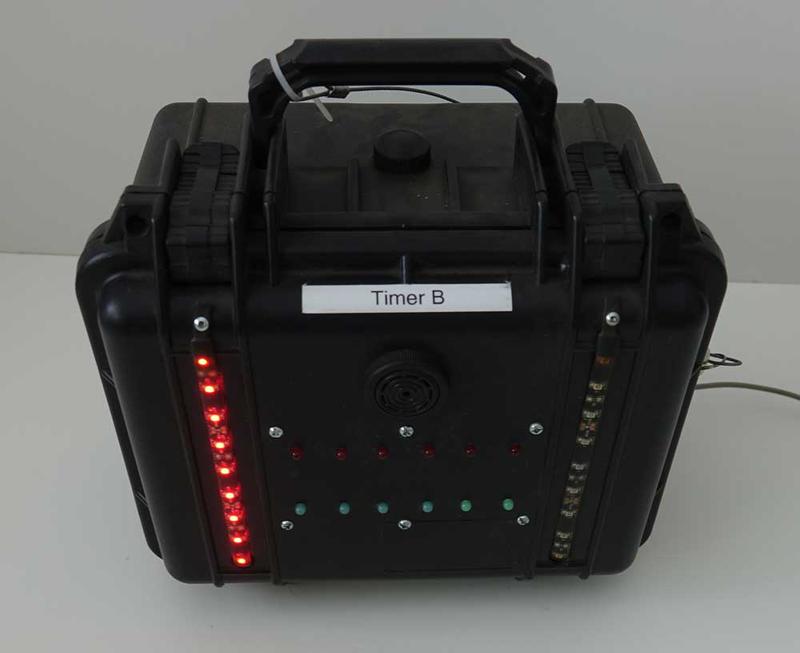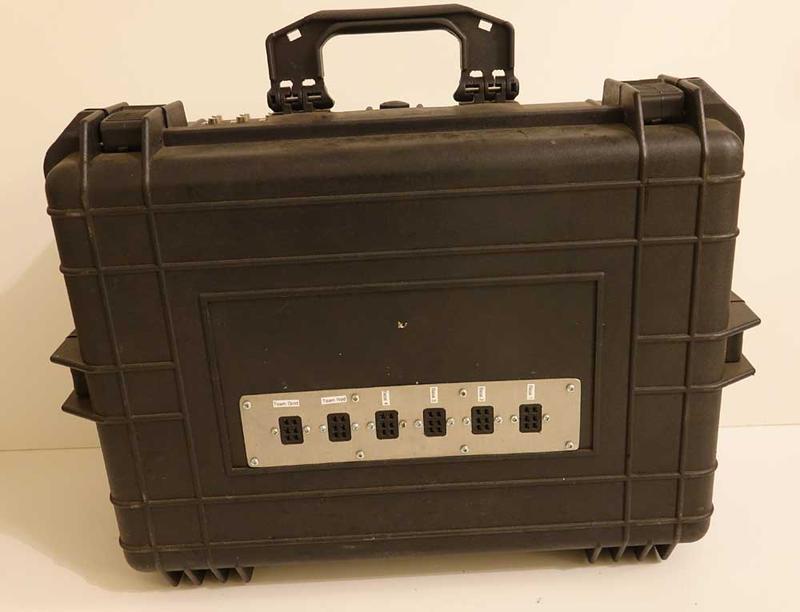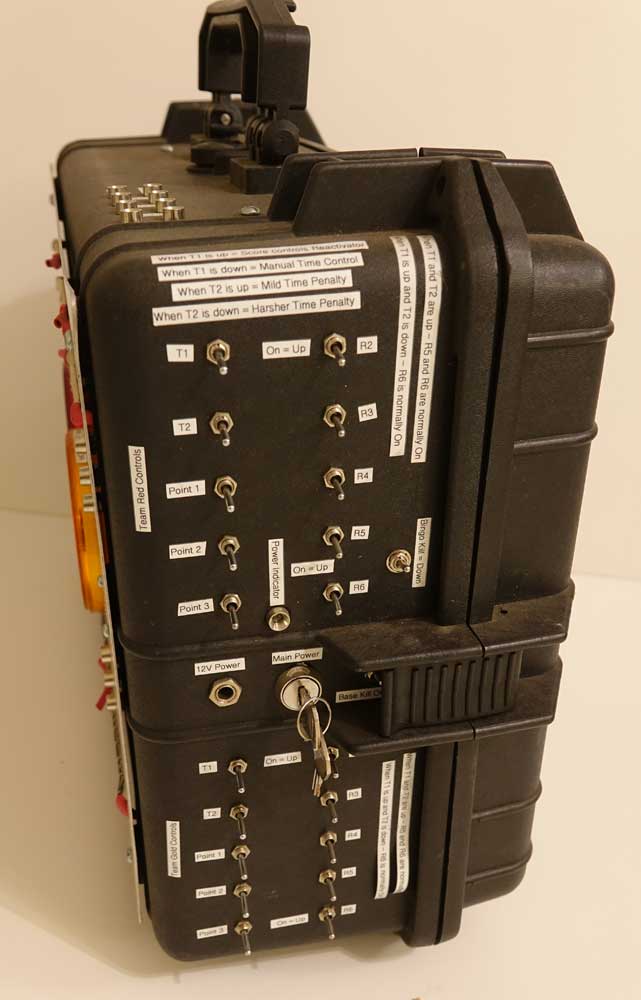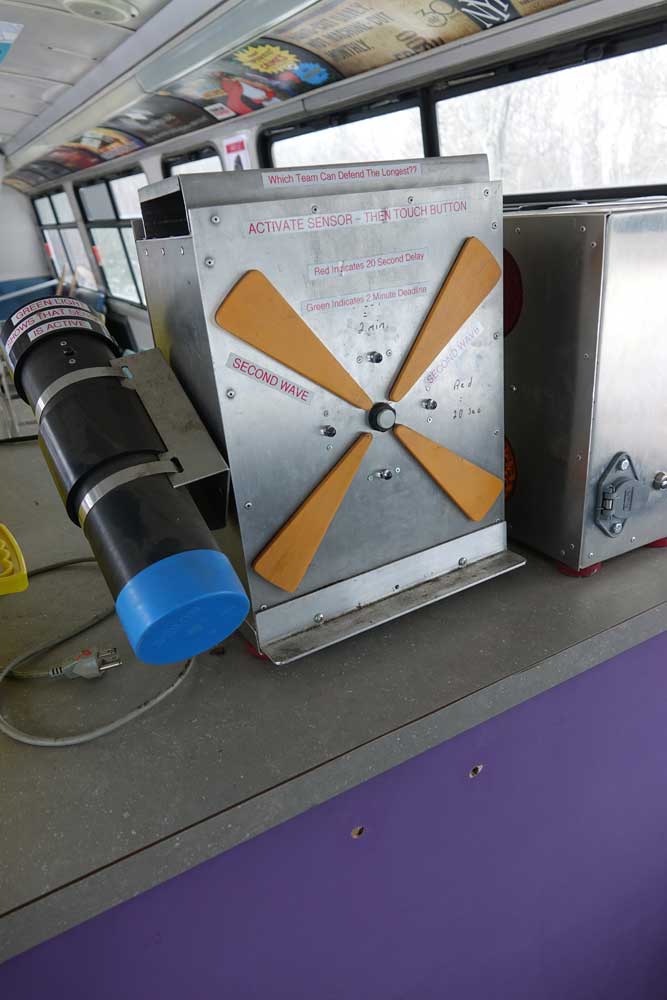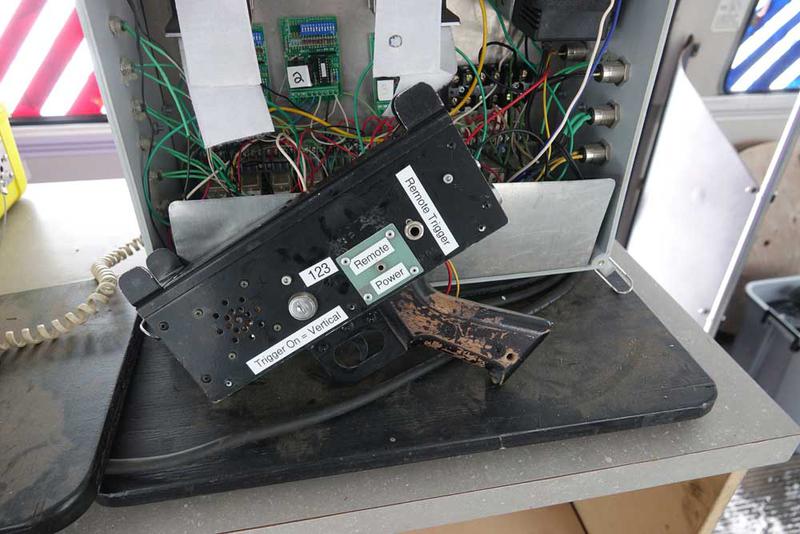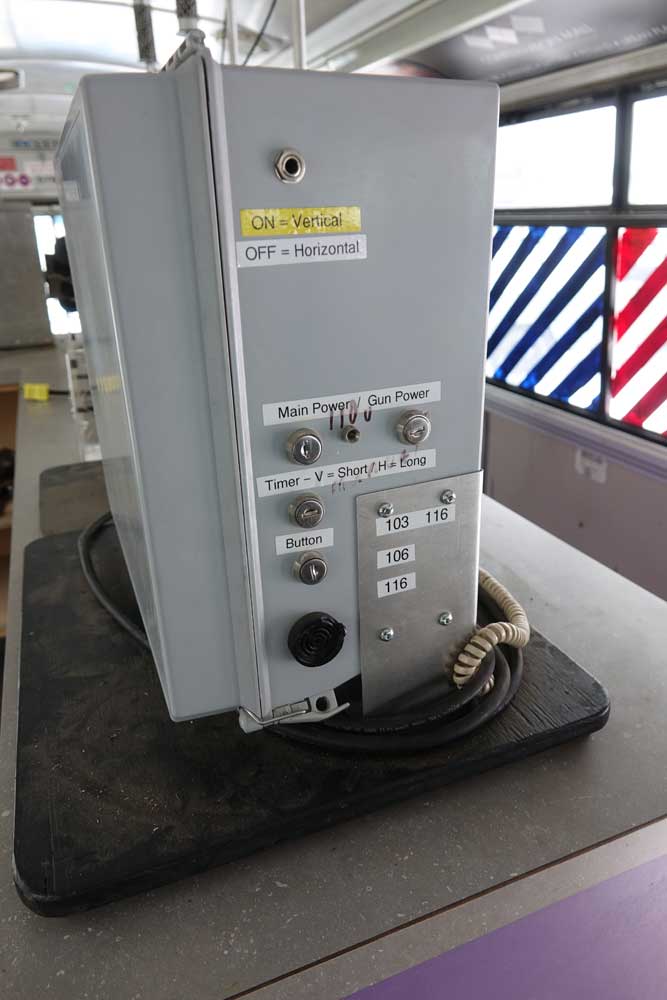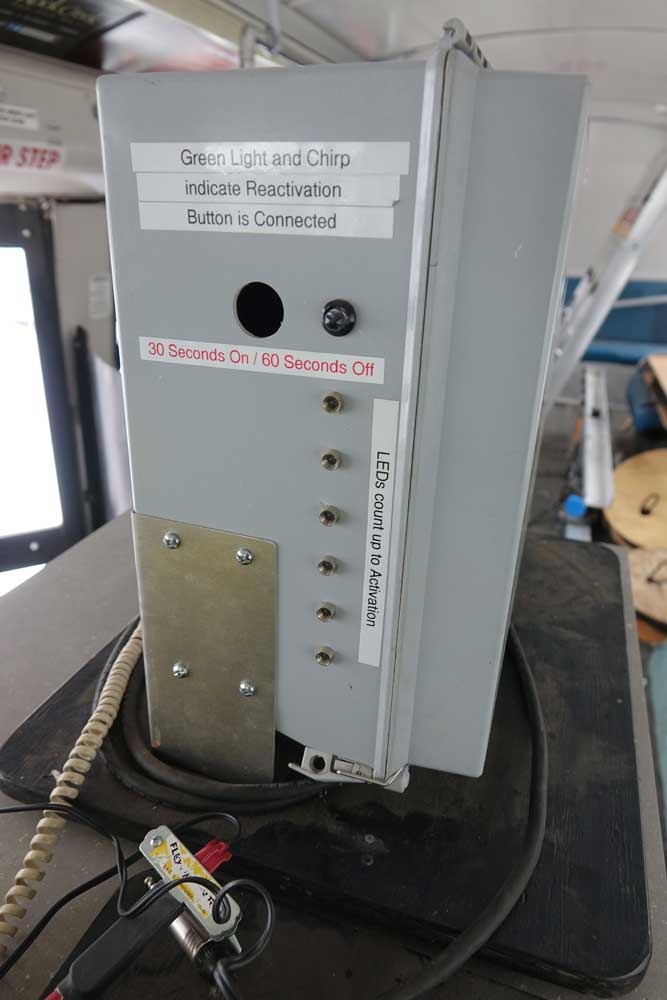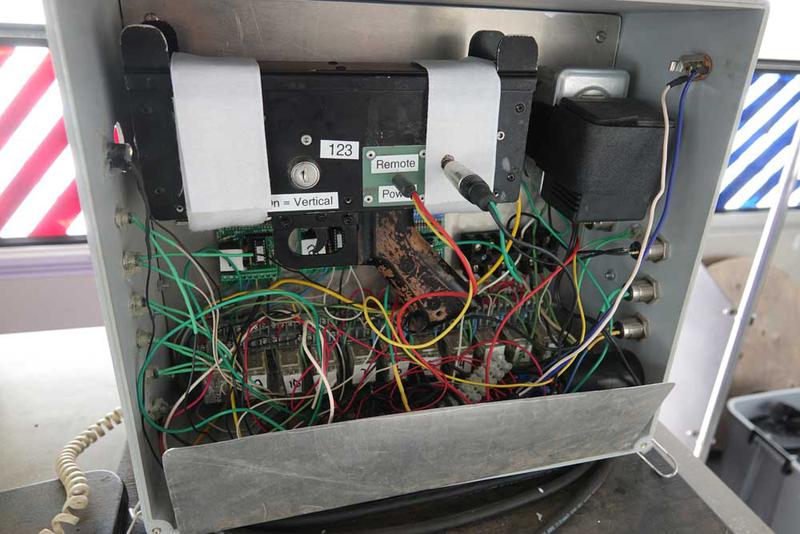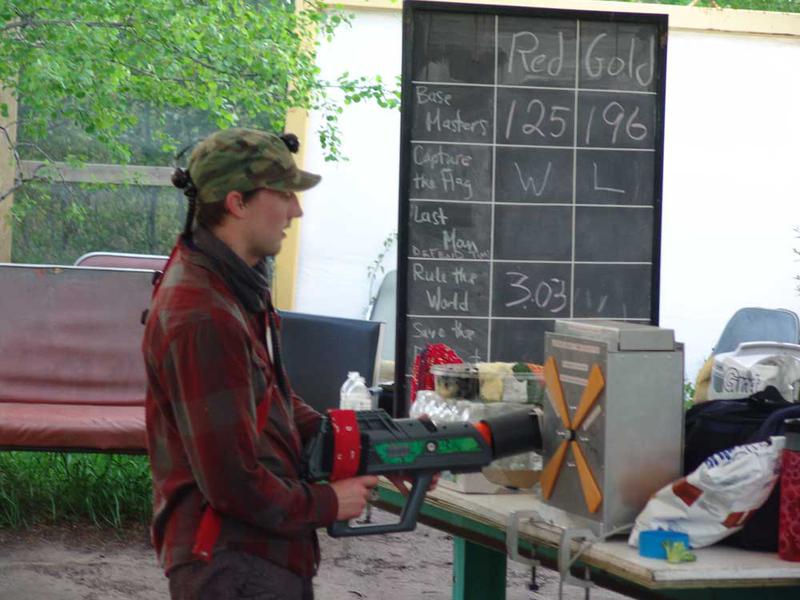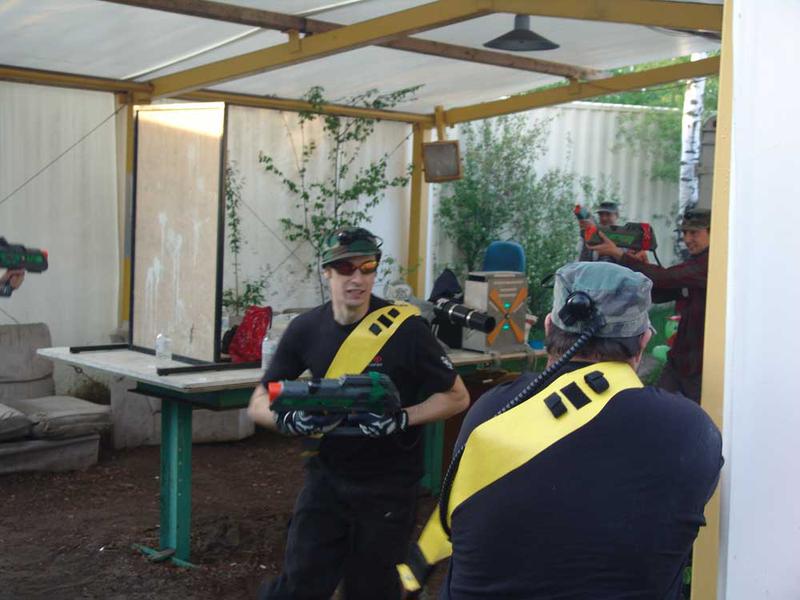Merrill Dunes
Over the years that we used the Classic and the Satr2 laser tag guns, we built numerous field gear items that enhanced the value of the guns and the games that we could offer to clients.
For most potential clients looking at the guns we are offering, the guns alone are likely all you need to put together entertaining games, but say a summer camp or an organization with indoor space buys a gun system. Some of our field equipment might pay off in such a situation. You need a place to use the gear, a place to store the gear, and enough player traffic to make it pay for itself.
This page shows the gear and tells a bit about how it can be used. Prices have not been posted and we are open to offers. So much depends on who buys the gun systems and whether the gear illustrated will be helpful in their application.
Laser Tag Field Gear Systems
The following photos show one of our portable Base Master systems that has been adapted for use with either the Classic or Satr2 laser guns. We have four tall base pylons and we also have alternative compact base units that allow three of the tall pylons to be replaced with more portable compact units.
The principle of the system is that two teams, Red and Gold, try to turn their light on at each of the four base units. This can only be achieved by shooting the laser sensor in the black tube and then, within a second, pressing the spring loaded toggle switch to activate a team colour light. The light then stays on until the other team can activate their colour. The system gives a point every 15 seconds to the team in control of each base, and the total points from all four bases are tallied on two digital counters (one for each team) on the master pylon.
The tall pylons also have the feature of a magnetic sensor which can be activated via a key switch. When the magnetic sensor is on, not only must the laser sensor be activated, but a magnetic probe must be held against the magnetic sensor in order for the light activating toggle switch to become active. Now the game being played transforms into a rugby game in a bingo hall in that players must control a single magnetic tool, usually a fuel can, in order to activate base lights - plus stay alive so that their laser gun can do its part of the takeover process!
Two of the videos above illustrate the use of Classic and of Satr2 guns using the Base Master system shown on this page. Note in the Office Routine that the compact base units are being utilized with Satr2 guns. In the JDC video, Classic guns are being used. In the Wolves video, a second Base Master system (described later) is being used with Satr2 guns. Most of the play in the Wolves video involves "Last Team Standing" so images of the Base Master system are limited.
Photo to the left - an Energy Crisis game being played with a magnetic fuel can spout.
The compact Base Master base units. Note the spring loaded toggle switch that is pressed up or down to activate the correct team light. These units do not have magnetic sensors installed.
Construction of the Base Master units. The tall pylon with the strobe lights on top is the master pylon where game results are tallied and displayed. The other three pylons can be exchanged for the compact units but the master pylon must be retained.
The system can be set so that the goal of one team taking over all four bases is rewarded by either the Gold or the Red strobe being activated, a loud buzzer sounding, and the system locking up until reset by the administrator.
Here is a laser sensor on a stationary Base Master unit but the portable base units operate in the same way.
The portable Base Master system is not totally weather proof and the pylons need a water proof cover if they are being left outdoors for a period of time. You can see the vinyl cover on the ground by this base unit. An Energy Crisis fuel container lurks at the left side of the photo!
Base Master I System
Base Master II System
The Base Master II system does not have laser sensors and operates purely on an honour system - which rarely seems to cause a problem. If you and your gun are dead, you are out of play and you drop the magnetic fuel can. The base units are activated by a magnetic probe, and nothing else, although it is easy to attach a small probe to each unit if ease of activation is desired.
The Base Master II system is very light and portable and weather proof. It can be used as four stand alone pylons with the goal of capturing all four bases - easily detected via the tall cattail LED team lights. Or the four units can be connected together via lightweight cables to create an integrated system.
The Integrated system records each time one team captures all the bases (a bingo!), resets the bases to off, and registers each win on a visual scoreboard. Two integrated timers are part of the system and as one team gets ahead, the window of reactivation for the winning team is reduced, making it more difficult for the leading team to stay ahead. The timers control the reactivation systems for the laser guns. The scoring system is such that one team can only be a maximum of 3 "bingos" ahead. Excess wins are dumped. So the game tends to be a fierce battle to the end! A weak team with a strong finish may take the prize!
The photo on the left shows the system score board and controller. Cable plugs in the rear of the controller are pictured. One of the two reactivation control timers is shown.
Above - the six cable ports in the rear of the Base Master II controller.
Above - one of the two, variable duration, reactivation window timers.
On the left is a Classic reactivation base for large groups. Hitting a paddle button on the pylon triggers the reactivation gun and reactivates several players at one time in a very simple manner.
On the left is a reactivation window timer that we have used for Classic as well as Satr2 groups. By limiting the time that players can reactivate, it is possible to enhance many games, especially when large groups are involved. The short wait between reactivations tends to slow the pace of a game. The timer is easy for the administrator to set and easy for players to understand. Countdown LEDs let players know how long they will have to wait.
On the left the reactivation timer is being used to house a Classic reactivation gun.
On the left is a module for a game that we call "Second Wave". It is a timed take-over game and when the attackers can successfully press the kill button on the module, an integrated stop watch in the module stops. This shows the duration of the attack as the stop watch is started at the beginning of the attack. It is a two part game with each side getting to defend and then to attack.
The problem with laser tag take-over games is that a group of players can storm a take-over button and the defenders can't kill them fast enough to prevent one of them from hitting the vital button.
The Second Wave module solves this problem. An attacker must first activate the laser sensor and then quickly press the take-over button. This starts a timer system that prevents a second button push for a set time, say 20 seconds. Then the sensor must be activated again within two minutes or the system will reset. But if the attacker can trigger the sensor and hit the take-over button in that window of time - game over! The stop watch is killed and a buzzer sounds.
Defenders have time to wipe out attackers during the waiting period between the first and the second wave. Usually the take-over occurs when all defenders have been knocked out.
A great game. Usually the defenders have limited lives to assure an eventual take-over. And limiting laser gun lives is really simple to do.
All of the equipment on this page is unique and not mass produced. We may use some of it with our new laser system, or we may not. We are open to offers. I haven't posted prices but once we see who purchases the gun systems we will be in a position to discuss the future of the equipment that has been displayed.








